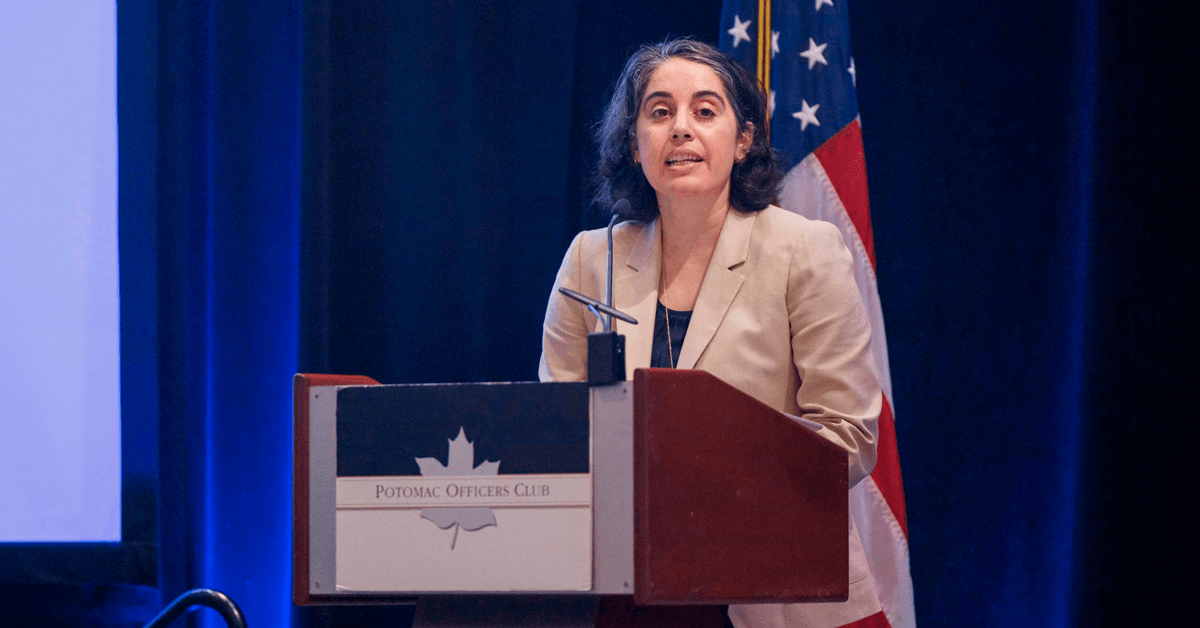At the much-discussed current “strategic inflection point” the U.S. finds itself — considering geopolitical disturbances like the war in Ukraine and competition from the ‘pacing threat’ of China — achieving “cost-effective mass” is the most effective strategy for deterrence, argues Melissa Dalton, under secretary of the U.S. Air Force.
China is currently using “superior mass” of technologies and manpower to “crowd out” its neighbors via the air and space domains, Dalton said during her opening keynote address at the Potomac Officers Club’s 2024 Air Defense Summit on Tuesday.
“While the United States has consistently proven throughout history that quality is better than quantity, we can also acknowledge another truth: quantity has a quality all its own, and it is the provision of the right quantity that will affect our adversary’s net assessment when weighing their options and the cost and benefits of aggression,” Dalton stated.
You may have missed your chance to hear from top Air Force officials, but don’t miss out on POC’s next exciting event: the 2024 Navy Summit. This Aug. 15 event will give you the chance to hear from and meet some of the sea service’s finest men and women. Check out the full lineup and register now!
Reoptimizing for Cost-Effective Mass
Dalton put forward two main lines of effort for the Air Force to help the Department of Defense achieve cost-effective mass.
Collaborative Combat Aircraft
“[Collaborative Combat Aircraft] represents the next natural step in the evolution of military aviation, the teaming of manned combat aircraft with several unmanned platforms to an instant force multiplier in the field,” explained Dalton.
“It is not aspirational, it is not science fiction. It’s already here. We’ve had decades of experience operating unmanned systems and our very own Air Force Research Lab has proven we can do this,” she continued.
The Air Force has already selected two companies — Anduril and General Atomics — to develop CCAs under increment one of the contract associated with the technology. However, Dalton said at the POC event that companies who didn’t win the bid for that contract will still be eligible to compete for other aspects of the endeavor—an atypical, forward-thinking acquisition approach.
Dalton said the CCA process needs to abide by three tenets in order to be pulled off:
- Open communication between engineers and warfighters because too much gets lost in the requirements process.
- Increased transparency; unnecessary cost overruns happen because of a lack of transparency.
- Open architecture; the system’s “platform, the payload, delivery sensors, communications, or software must all be able to play with one another.” This is necessary also to achieve interoperability with allies.
She told GovCon Wire that increment two of the CCA contract is “coming up” soon.

Securing the Space Domain
Just as important as the CCA initiative, Dalton said, is the Commercial Space Integration Strategy. The principal tenets of this aspect of mounting cost-effective mass are:
- Collaborative transparency
- Operational and technical integration
- Risk management
- Securing the future
“Our guardians are laser-focused on partnering with the commercial sector in order to provide the joint force with the cost-effective mass that will keep our space-based systems resilient and beyond question. We simply cannot do it alone, especially in the near term where we expect more constrained budgets,” Dalton emphasized.
Industry Portal
In the space realm, the Space Force has set up an accessible methodology for commercial partners to suggest space solutions: the Space Systems Command Front Door, a portal that facilitates easy access for public-private communication about space technologies.
“As of today, the Front Door portal has processed over 700 vendor idea products or services, and we have 121 more in the hopper. These are the sorts of ideas that will balance government and commercially provided solutions, and that will ensure interoperability between those two sectors,” Dalton stated.





